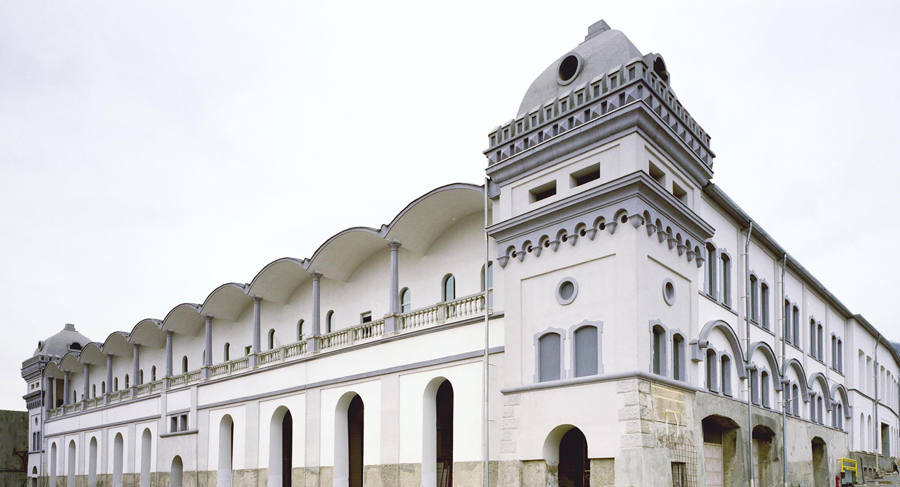A new territory,
art and labour
ALT, history of an imagination
ALT Contemporary Art is the brainchild of the entrepreneur and art lover, Fausto Radici. The idea also fired Tullio Leggeri’s imagination. Leggeri is both an architect and a collector (find out more). Both wanted to see the old Italcementi plant at Alzano Lombardo up graded, and they worked hard toward this end. The plant, dating back to 1883, was in a very poor state of repair when it was purchased in the early ‘noughties’. It was then finally reopened to the public on 27 June 2009 as a contemporary art museum and multifunctional venue for events and educational activities.
ALT embodies a shared passionate interest in the forms of expression of the contemporary era. This interest takes as its guiding light the search for beauty and an innovative, transversal (re)interpretation of one of the most significant industrial plants of the province of Bergamo as a whole. This monumental work was, for some decades, a structure of crucial importance for the construction sector, providing employment for hundreds of workers. Without abandoning its original architecture and historical heritage, it now fosters perceptions of reality oriented toward the ‘other’ –toward art.

ALT is a priceless collection of artworks spanning the entire twentieth century with its avant-garde movements, while also leading us into this new millennium. While Duchamp, Calos and Balla interact with Cattelan and Wiharso, they also, most importantly, interact with the arches and walls of this old plant, thus creating a unique atmosphere where local history and its fundamentals (labour, and the many facets of the land of Val Seriana) are projected into the “presente prossimo” or “perfect present tense”. “Present”, yet − like the latest artworks of our own day − also of the future. Unfailingly.
The halls of the old factory, of a surface area of 3,500 sq. m., host 300 works (paintings and installations), which the public may view free of charge. Restoration of the building was conducted in strict observance of the fundamental rule of the reversibility of interventions. Thanks to in-depth study of the building, the work was conducted in a spirit of full awareness of the nature of the tasks at hand. Renovation entailed the addition of floors, materials and structures that, while contrasting, seamlessly blend. These elements can be removed entirely. The original has not been modified. It has, instead, been implemented.
The spaces have been conserved and rendered more versatile through non-invasive architectural interventions, to accommodate new uses. A philological approach was adopted for the work on the existing building, maintaining the inimitable character of the plant along with the building’s historical significance and appeal to the emotions. Out of it all comes a new space, and a bridge between past, present and future. Here, we have an alternative approach to the story tellings of contemporary art, of industry, of the potentials of architecture itself, and of the will to accommodate varying idioms of expression.
By adopting an open approach, one accepts contaminations. This is why ALT offers itself as an ideal venue for educational activities in the field of art, organised not only by the management committee but also by schools and non-profit-making associations. Hence, also the perception of this space as a multifunctional venue for events of all kinds (weddings, conferences, shows and performance, photo shooting sessions, trade fairs, concerts and corporate events etc.). All this, against the backdrop of art and a stunningly ‘as is’ industrial plant.